Fall flowers for pots – 12 spectacular blooms to add seasonal color to containers
Choose from the prettiest annuals and perennials to extend the flowering season in your backyard
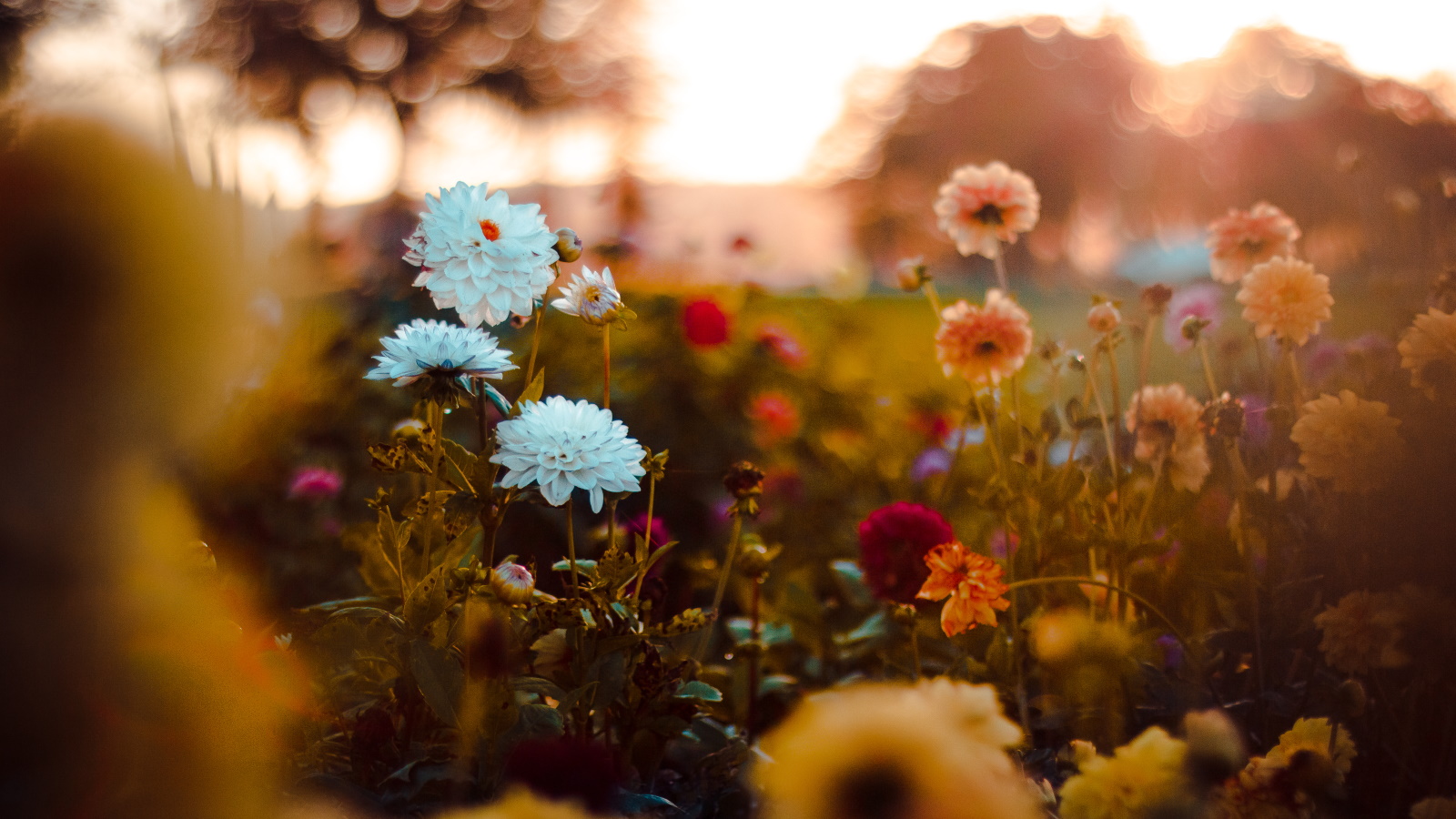

Tenielle Jordison
Fall is such an exciting time in the garden - as the seasons change, sunlight mellows and the tones of your garden will soften, too. Incorporating some of the best fall flowers for pots in your yard's landscape can radiate rich warms colors and offer a long blooming season, even as temperatures start to drop.
If your container gardening ideas are usually limited to the best spring bulbs and summer show-stoppers, then consider the possibilities offered by fall-flowering plants. Many of them will start to bloom in late-summer so you can enjoy them for an extended period into fall and maintain that all-important floral interest in your yard.
As well as choosing the best fall flowers, don't overlook the importance of investing the right containers. There are many beautiful fall planter ideas that will help you to create a seasonal backyard sanctuary. Large planters can create a small garden oasis, and can be potted up with several different varieties of flowers and grasses to add greater textural interest. Here, we've compiled the best fall flowers for pots for you to use in your planters this season.
12 best fall flowers for pots
Whether you want to grow reliable perennials or choose stunning annuals for fall this year, there is a wonderful variety of different fall flowers for pots that will instantly bring a burst of color to your fall garden. Before choosing among the best fall flowers for pots below, bear in mind your US hardiness zone, as this will influence what you can grow, and may limit the lifespan of less winter-hardy plants.
1. Pansies
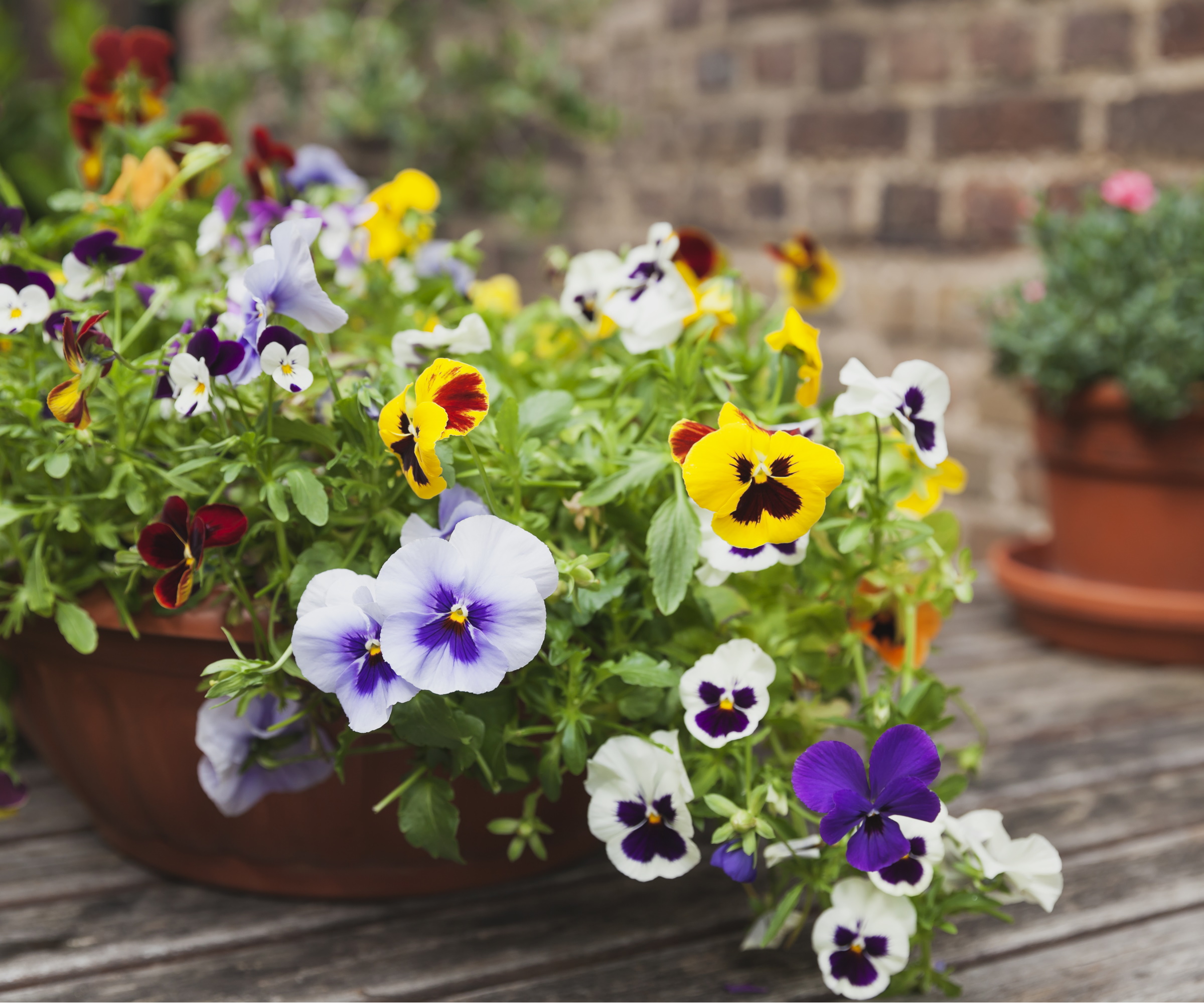
Pansies are some of the best-loved fall flowers for pots. They are perfect for adding to your cottage garden ideas and are also prolific self-seeders, so you can enjoy them for years to come.
‘With their heart-shaped, overlapping petals, pansies offer the widest variety of bright, pretty colors and patterns,’ says Jen Stark, founder of the Happy DIY Home blog. ‘They don’t ask for much care, and in addition to pots they are also a good option for a trailing plant for hanging baskets and borders,' she adds.
It's easy to learn how to grow pansies – they like full or partial sun, but need cooler temperatures to grow and flower.
Design expertise in your inbox – from inspiring decorating ideas and beautiful celebrity homes to practical gardening advice and shopping round-ups.
‘Make sure the planting area will get morning sun but avoid the heat of the late afternoon,’ says Jen. ‘A well-drained soil or potting mix, snail pellets, and a bit of liquid fertilizer are all you need to promote new growth.’
You can grow pansies as annuals in almost every US hardiness zone with these pansy seeds from Amazon.

Jen Stark is a professional horticulturist with Master's degree in horticulture from the University of Florida. She is also an interior designer and home improvement expert. She owns a 50-acre organic market farm and keeps goats, chickens, turkeys, cows and pigs on her farm. She is an instructor for her community's Organic and Sustainable Farming project.
2. Chrysanthemums

Chrysanthemums are surely one of the most glorious garden sights in the fall. Native to East Asia, they come in a wide variety of colors and shapes, and make stunning cut flowers.
They will bloom from the end of summer right up until the frosts set in, but ideally you should get them planted in the spring to give them chance to establish.
Chrysanthemums are one of the most popular fall flowers for pots, and they are great for containers because they can withstand colder temperatures. However, though perennial, chrysanthemums will not survive outdoors in colder climates, so in many areas need to be overwintered indoors or in a greenhouse.
Chrysanthemums require well-drained soil, but do not allow the soil to dry out. They also like plenty of fertilizer and full sun. Pinch out the growing tips to encourage bushier plants and to keep chrysanthemums blooming.
You can grow chrysanthemums in US hardiness zone 5 to zone 9 using these chrysanthemum seeds from Amazon. It's also very easy to propagate chrysanthemums if you know how to take plant cuttings.
3. Goldenrod
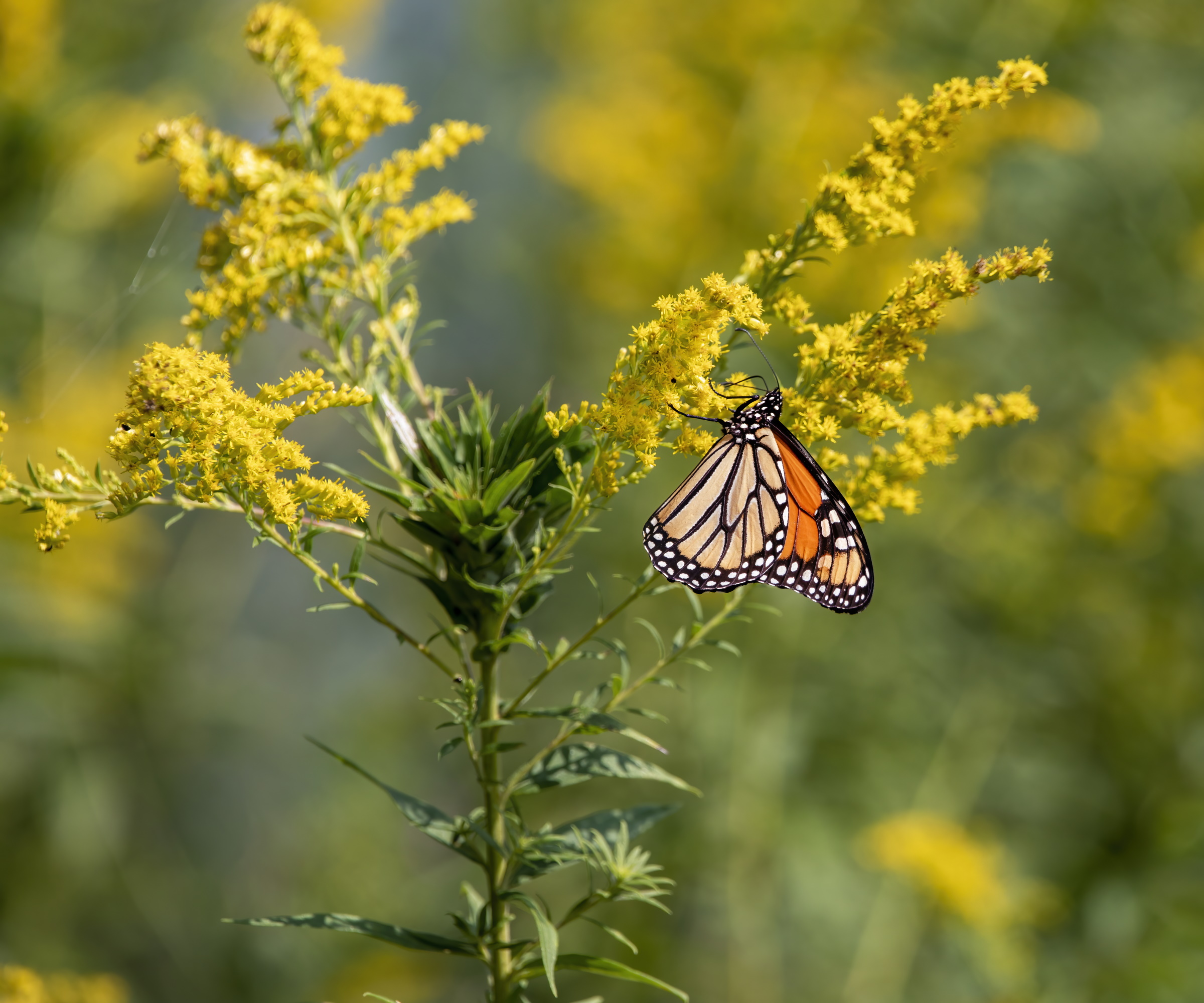
Also known as solidago, goldenrod is easily grown in pots, and bursts with small yellow flowers from summer to fall.
As a herbaceous perennial, goldenrod is a great investment in your long-term garden ideas. The plants are fairly compact, yet can be somewhat invasive, which makes them ideally suited to pots. They rarely have problems, and are the perfect container plant for pollinators.
Goldenrod prefers a sunny spot, but will tolerate some shade, and can be grown in US hardiness zone 2 to zone 8.
4. Dahlias

A long-loved favorite for both the summer and fall flowering season, dahlias are a classic for showy blooms to brighten up gloomier days. There are so many types of dahlias to choose from, but the fiery colors of orange, red and yellow varieties are arguably the best for complementing the fall backyard landscape.
'Dahlias are the perfect addition to fall flower pots if you're looking for a a focal point in your thriller, spiller, filler containers,' says Rachel Bull, Head of Gardens at Homes & Gardens. 'Dahlias grow in pots well and choosing to plant dahlia tubers in containers with drainage holes means that you can monitor moisture levels and ensure your dahlia roots don't sit in oversaturated soil,' she adds.
It's best to choose more compact varieties for pots, but generally speaking it's very simple to grow dahlias from seed across US hardiness zone 8 to zone 10. They enjoy a sunny, sheltered spot and prefer consistently moist, but not soggy, soil.
This Firepot Dahlia from Nature Hills and this Sassafras Dahlia from Nature Hills are wonderful hues for fall pots.

Rachel is a gardening editor, flower grower and floral designer. Her journalism career began on Country Living magazine, sparking a love of container gardening and wild planting. After more than a decade writing for and editing a range of consumer, business and special interest titles, Rachel became editor of floral art magazine The Flower Arranger. She then trained and worked as a floral designer and stylist in London for six years, before joining the Homes & Gardens team.
5. Heleniums
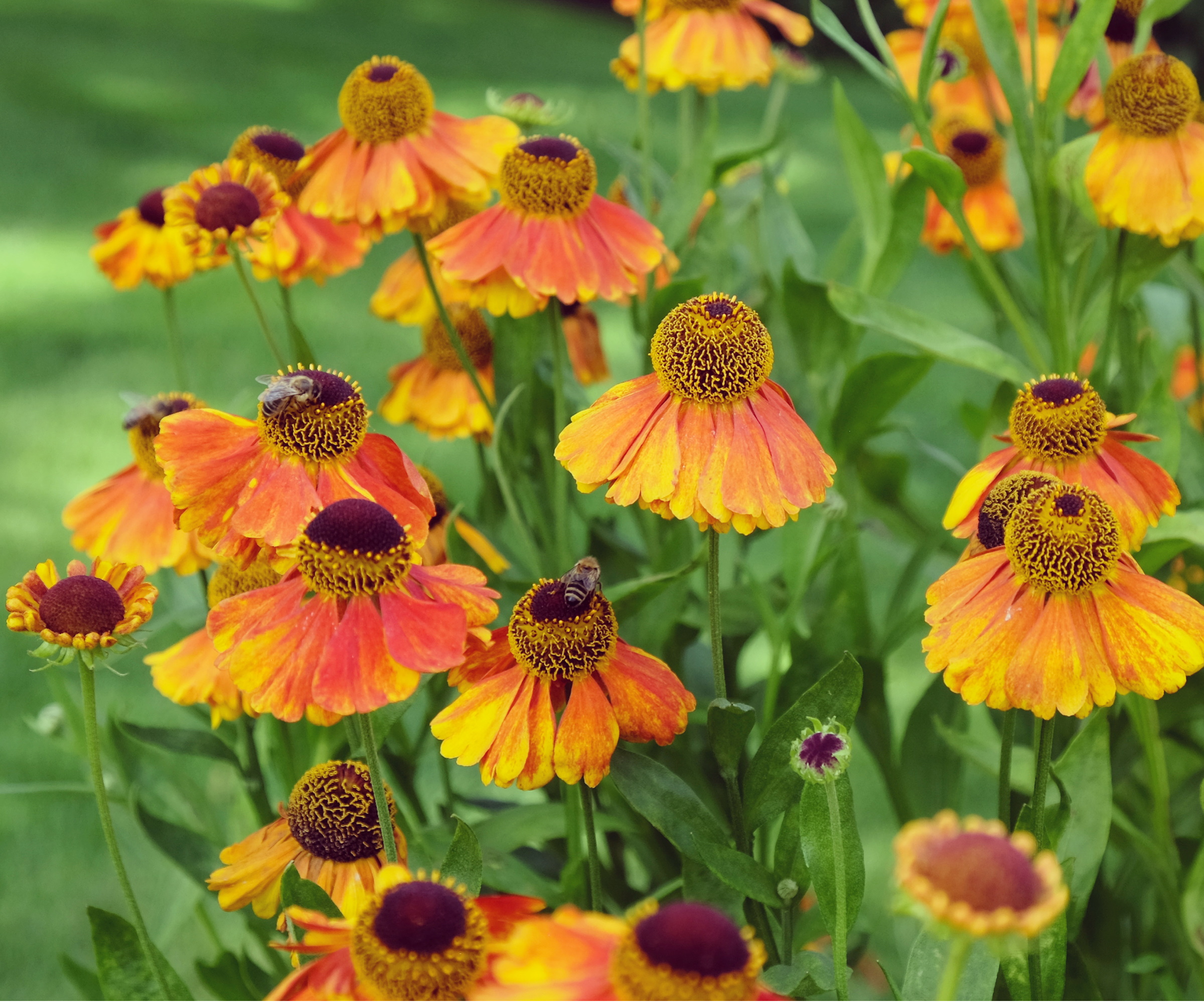
Coming in fiery shades of yellow, orange and red, heleniums bring warmth and vibrancy to pots from mid summer into fall, with their whimsical daisy-like flowers. They're closely related to rudbeckia flowers and are one of the best plants for fall pollinators.
While heleniums will thrive in most soil types, they do need a sunny but sheltered spot. As thirsty plants, they should only planted in large containers, and they need frequent watering to prevent the soil from drying out. Deadhead regularly to extend the flowering season as long as possible.
Heleniums are perennial flowers, winter hardy across US hardiness zone 3 to zone 8. They can be bought from a range of suppliers, like these heleniums from Nature Hills.
6. Petunias
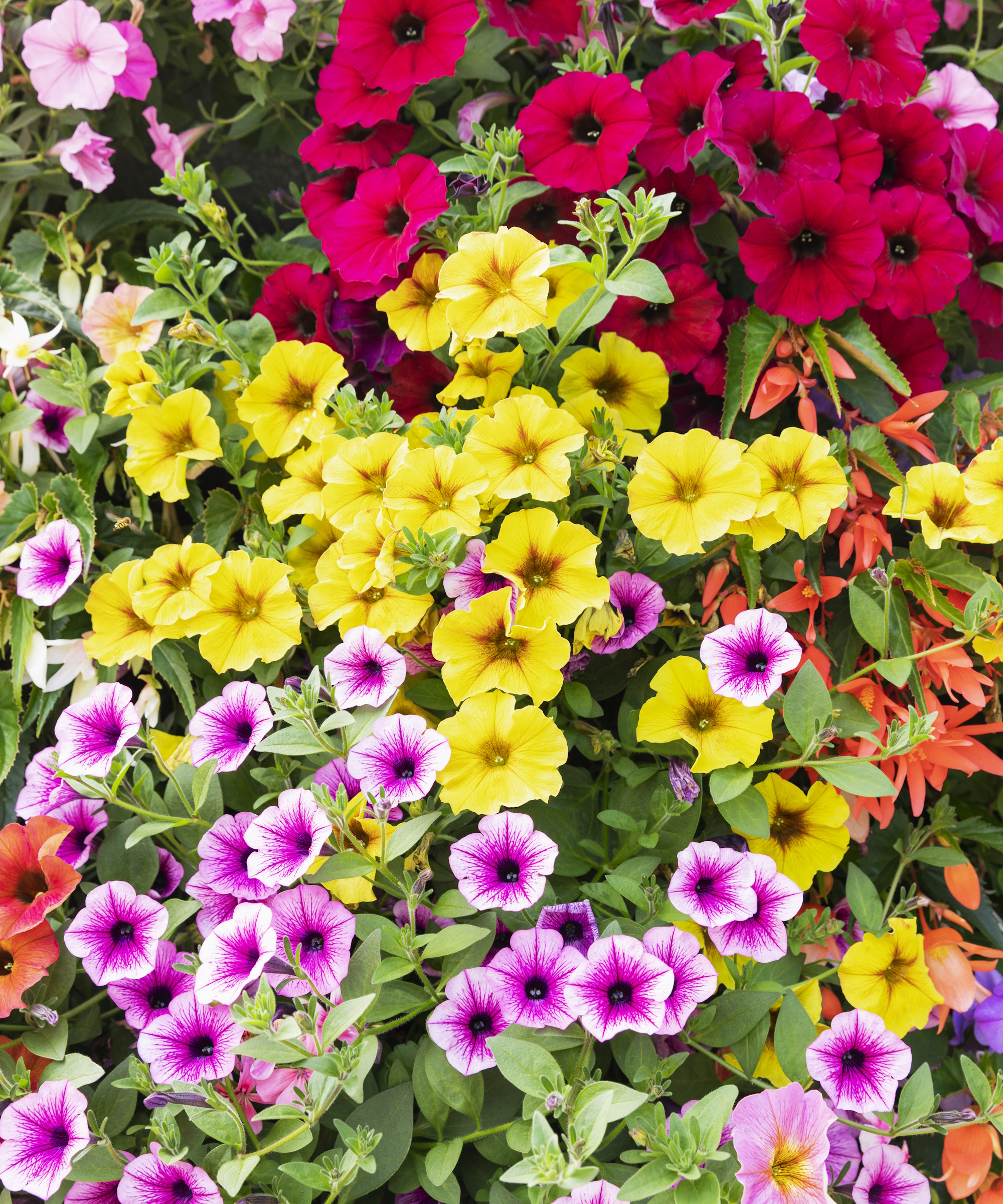
‘Petunias are many gardeners' all-time favorite fall flowers for pots because of their small trumpet-shaped blooms come in so many different colors,’ says Jen Stark.
‘Their stunning look when in bloom makes them a great addition to autumn displays, while they are also one of the best plants for hanging baskets.'
Petunias offer high reward for minimal effort, as they are easy to care for. Fertilizing these plants on a regular basis will keep them blooming. As well as learning how to grow petunias in pots, you should also learn how to deadhead petunias to extend their growing season.
They can be grown as perennials in US zone 9 to zone 11, or otherwise only as annuals. Find the best petunias for your pots from nurseries, supermarkets and online, like these petunia seeds from Walmart.
7. Asters
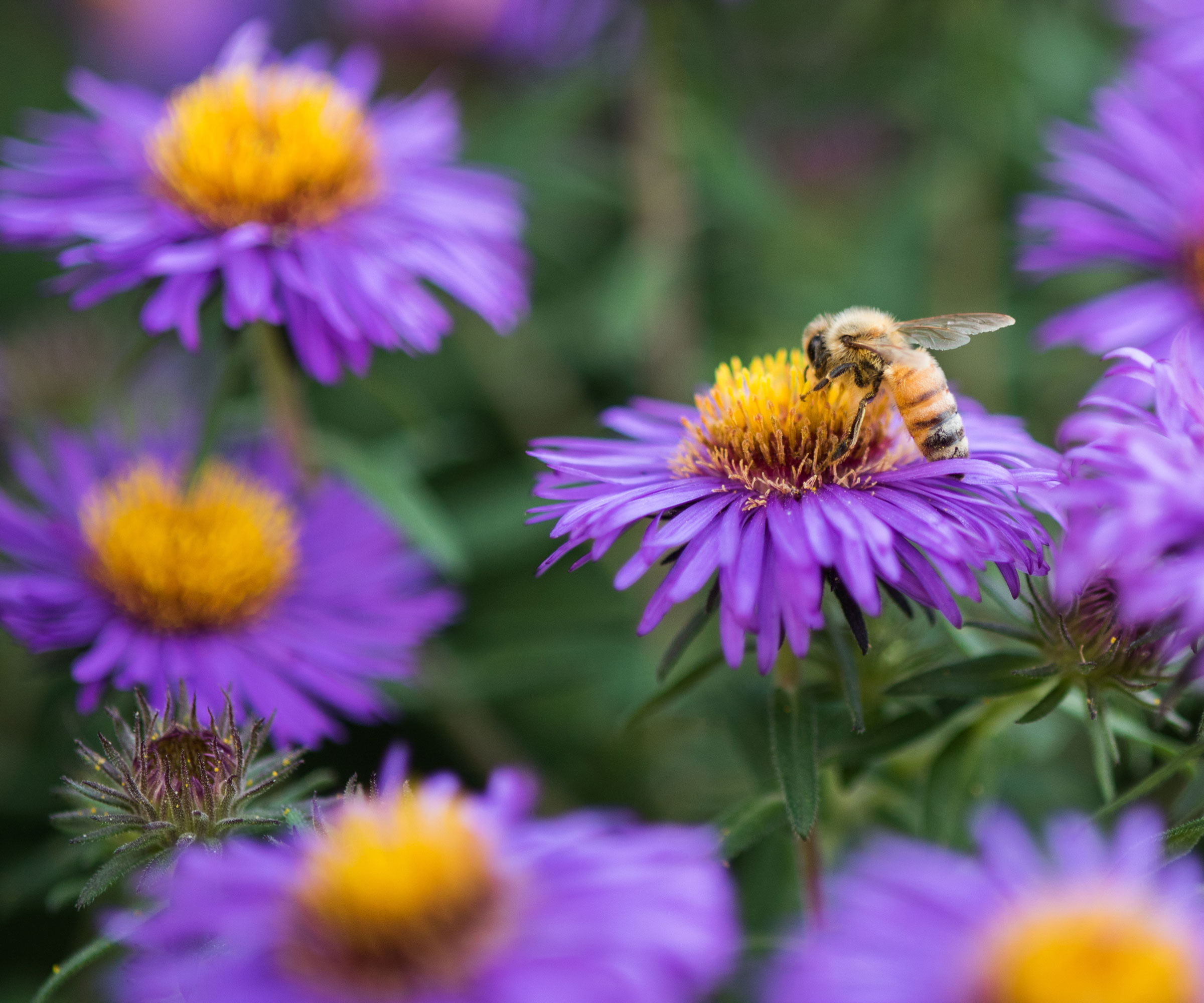
Asters – also known as Michaelmas daisies for their daisy-like appearance – provide invaluable color in the late summer and fall garden with their pink, purple or white flowers. They also provide an important source of nectar for pollinating insects.
Asters are a perennial flower, and if planted in a sunny spot in free-draining soil will keep returning each year. They're even one of the longest-flowering perennials available. They do appreciate some shelter from strong winds, though.
Pinch them out to extend the flowering season, and cut them back in June. Asters can be grown across US hardiness zone 3 to zone 8, but in cooler areas, it’s best to overwinter them in a greenhouse.
Buy aster seeds online, this these from Amazon.
8. Snapdragons
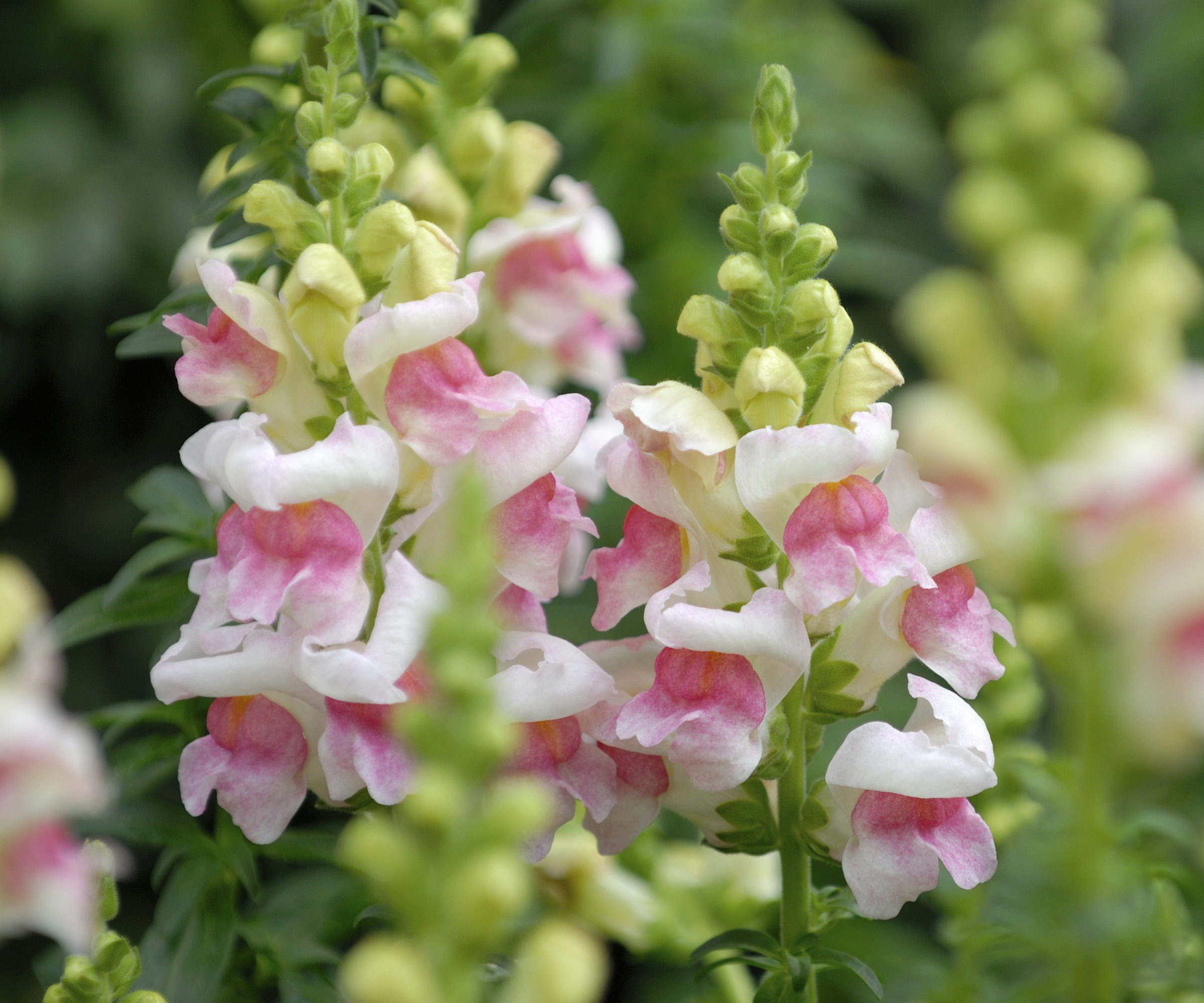
To add some vertical interest to your fall planters, consider growing snapdragons. These prolific flowerers bloom from early summer into fall and offer long stems covered in bright blooms.
'I love snapdragons for their wide range of colors - from yellow to pink and purple. Planting these in pots for fall is a sure way to brighten up your yard and start the colder seasons with impressive flowers,' says Rachel Bull. 'They're also perfect for cut flower gardens,' she adds.
You can keep snapdragons flowering for longer by deadheading the fading snapdragon blooms at the top of the stem to encourage more to grow.
They grow best across US hardiness zone 7 to zone 10 and can be grown with these snapdragon seeds from Amazon.
9. Marigolds

Marigolds have a long flowering season that often extends from spring into the fall – though eventually the frost will finish them off. This means it's important to know when to plant marigolds to get the most out of them.
‘Marigolds are quite popular in companion planting as they help keep away aphids and other pests. Marigolds are happy in pots, baskets, window boxes, or containers provided they are placed in full sun,' says Jen Stark.
‘Potted marigolds will definitely brighten up your patio or doorstep because of their vibrant colors - from yellows, limes, and creams to just about every shade of orange and bronze,’ she adds.
Plant in full sun in free-draining, fertile soil. As they are hardy to hot and cold temperatures, marigolds are some of the easiest fall flowers for pots to look after.
You can grow them in US hardiness zone 2 to zone 11, but they will only be hardy from zone 9. Grow marigolds from seed easily with these marigold seeds from Walmart.
10. Calibrachoa
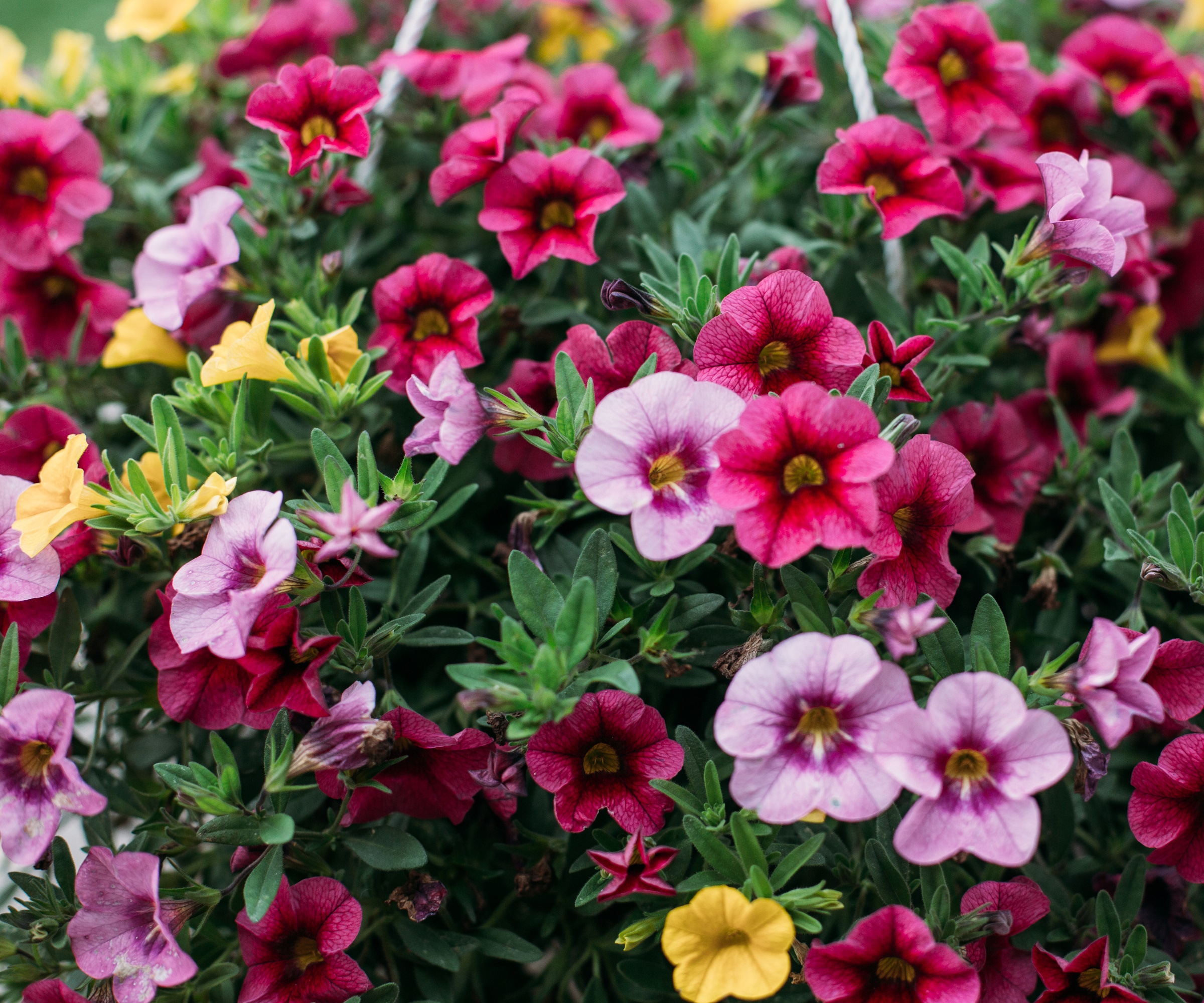
This miniature variety of petunia, often known as million bells, will fill out pots beautifully into the fall, and has a romantic trailing habit.
Calibrachoa are available in a wide color palette, with some having variety within one plant. 'Mini Rosebud Romantic Peachy' has beautiful flowers of peach and pink, while 'Minitunia Kabloom Mixed' offers a stunning mix of colors. Or, you can opt for this White Superbells Calibrachoa from Nature Hills for an elegant look.
Though perennials – hardy in zone 9 to zone 11 – calibrachoa are tender, and so will need overwintering in a greenhouse in cooler areas. Otherwise, they are best grown as annuals.
11. Toad lily
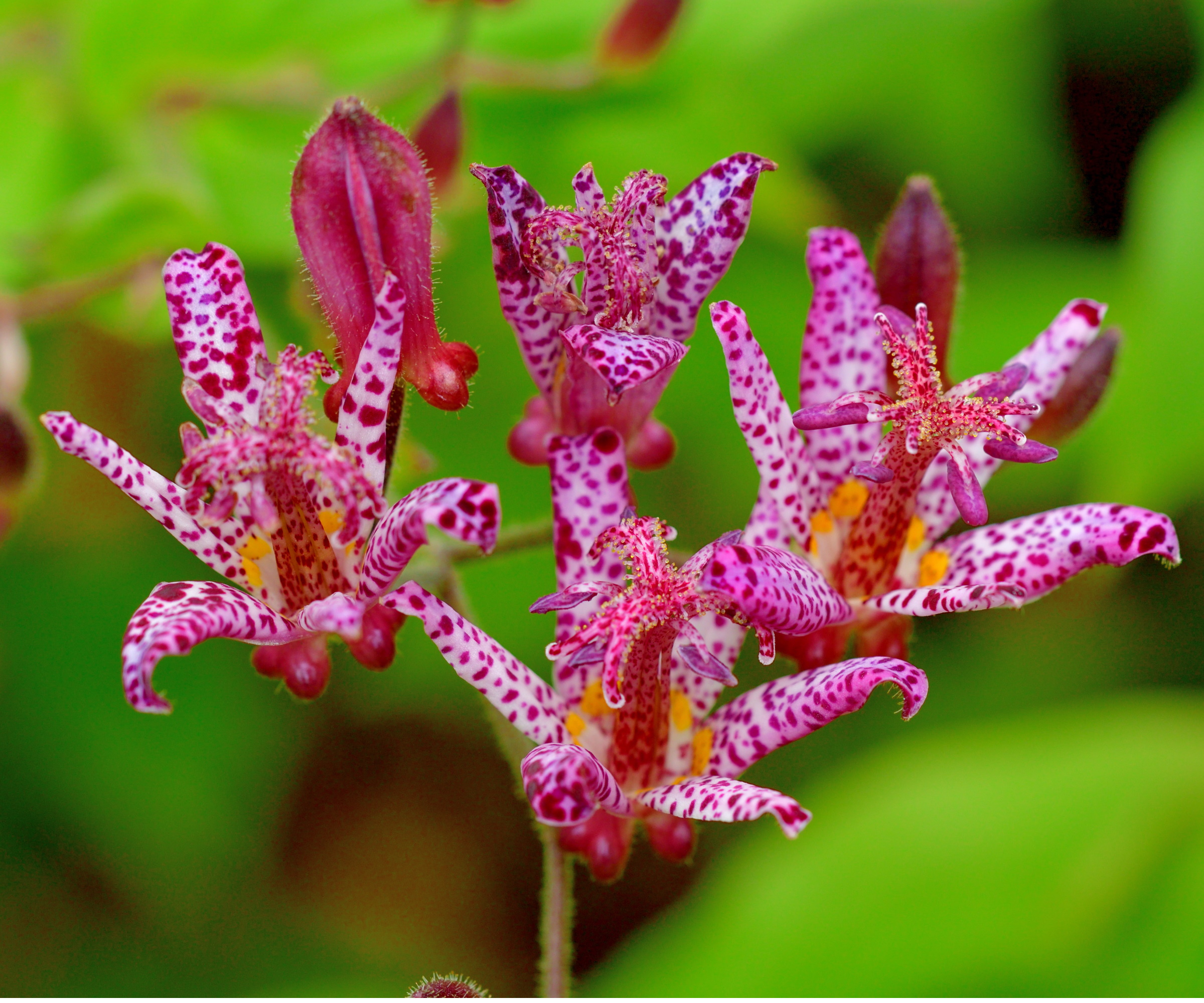
Toad lily is as unique as its name sounds. Rhizomatous perennials, toad lilies are native to Japan and have an exotic appearance – yet despite their delicate looks are surprisingly easy to care for.
They require very little attention. However, you need to place plants in partial to full shade for them to thrive.
Blooming from summer to fall, toad lily is a compact plant that grows in any well-drained soil type, making them perfect fall flowers for pots if you're looking for something unusual or want to take inspiration from Japanese garden styles.
You can grow toad lily in US hardiness zone 4 to zone 9, and toad lily plants can be purchased from Nature Hills.
12. Sweet alyssum
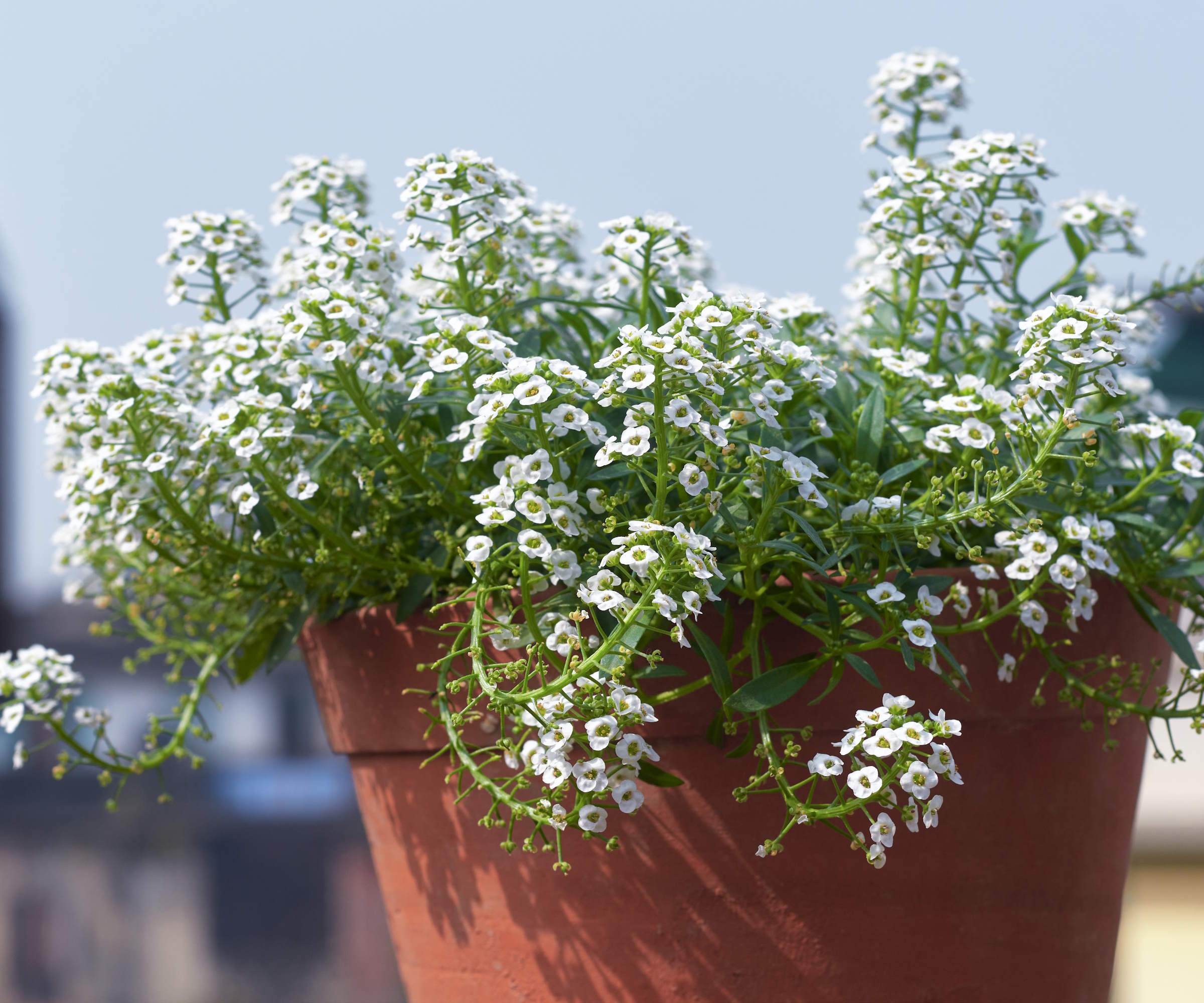
Sweet alyssum creates a frothy carpet of white to purple flowers that spill over the side of a container arrangement. They are also very fragrant.
'The special thing about sweet alyssum is that they actually bloom in spring before dying back in the heat of summer. They then have a second round of blooms in fall,' says Rachel Bull. They're popular choices for spring window boxes, as well as fall planters.
This means the flowers are most often grown as an annual, though they can be grown as short-lived perennials in across US hardiness zone 9 to zone 11.
'Plant sweet alyssum in well-drained soil, but do not allow it to dry out. Otherwise, the plants are low maintenance,' notes Rachel.
Grow alyssum with these purple alyssum seeds from Walmart.
FAQs
How do I arrange fall flowers in pots?
With so many fall flowers for pots to choose from, it can be hard to know how to best plant them so that you make the most of their different colors and shapes. Try curating your fall pots based on a color scheme - for example using red, yellow and orange flowers in the same container. Another way to arrange your fall flowers in pots is by including a showy thriller plant, a trailing spiller plant and a filler plant to add interest in the gaps.
How do I protect fall flowers from frost?
There are lots of ways you can protect fall flowers from frost. For example, by using frost covers, wrapping pots to keep roots warm, mulching or moving containers into a greenhouse. However, there are many fall perennial flowers that will just die back in frost and it's important to cut them back where necessary so that they stay healthy during winter and return in the next season.
There are so many other wonderful varieties of fall flowers that work beautifully in pots, including lavender, which provides calming, peppermint-colored foliage in the fall, and hostas - growing them in pots also helps to keep the slugs at bay. It's worth exploring other plants for fall color to see what you want to grow in your yard for the incoming season.

Melanie has worked in homes and gardens media for two decades. Having previously served as Editor on Period Living magazine, and worked on Homes & Gardens, Gardening Etc, Real Homes, and Homebuilding & Renovating, she is now focusing on her passion for gardening as a Senior Editor at Gardening Know How. As a keen home grower, Melanie has experimented with pretty much every type of vegetable at some point – with mixed results. Often it is the simplest things that elude you, which may explain why she just can't seem to master zucchinis.
- Tenielle JordisonGardens Content Editor